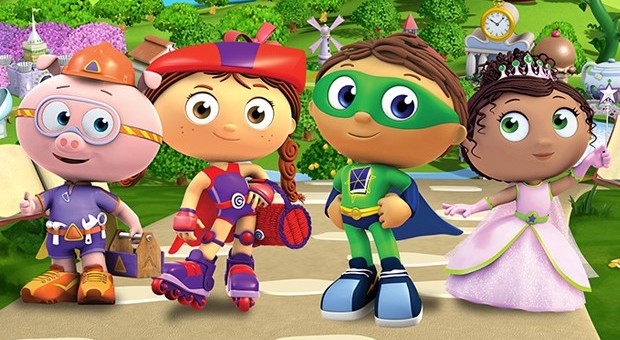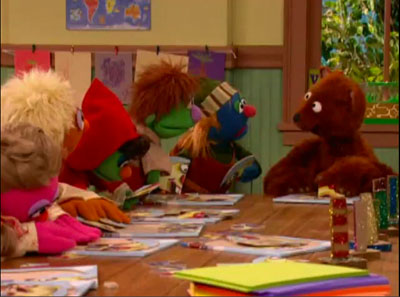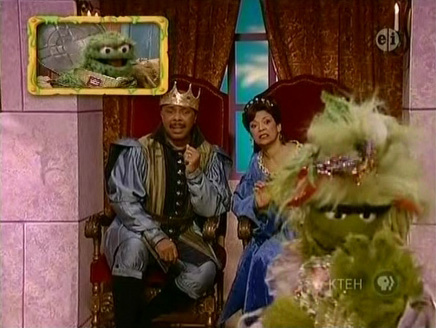Fairy Tale Mashups. We all know about them. We’ve all seen them in many forms, from books to movies to TV. Fairy tale narratives are so short, simple, and familiar that it’s easy to combine them to make something new and fun out of these old stories. Studying the ‘why’ of fairy tale mashups gets to the heart of what we do at the FTTV project, but this particular post is about the ‘how’.
HOW are these fairy tales mashed together in children’s TV? What strategies are used? Are there patterns?
While completing this project, I studied many mashups. I read plot summaries on some of them, but some I was lucky enough to be able to find and watch. I found that just because there are multiple fairy tale motifs present in one episode does not necessarily mean the plots are woven together or that the characters play more than one role. There are three dominant strategies used to present multiple fairy tale motifs in a single episode, though most actual mashups are a combination or a creative reworking of these strategies.

First, there is the strategy that uses a fairy tale storyworld where many fairy tale characters live and interact. This is the concept that is used for movies like Hoodwinked or the musical Into the Woods. There are not many single episodes that use this strategy since the building of the storyworld works best if worked into the premise of the entire run of the show. This is the case for the children’s show Super Why!, which takes place in Storybrook Village, “where all the fairy tale friends live.” The very premise of Super Why! is a fairy tale mashup because the four main characters are contextualized in the fairy tale world as relatives of characters from fairy tales like the Three Little Pigs, Little Red Riding Hood, Jack & the Beanstalk, and the Princess & the Pea. This allows the protagonists to be original characters, but to live in a world where many fairy tale plots happen.

The second is the Sesame Street approach. Behind the scenes on our project, we have a note that says “What to do about Sesame Street?” This is a big question for us because of the way Sesame Street works with fairy tales. Sesame Street is a place where many fairy tale characters live, along with original characters like Elmo and Big Bird and humans like Mr. Hooper and Gordon. These characters canonically exist in the same universe, but in creating a database we are left with a problem because characters are separated from their plots. Baby Bear is a recurring character, but most of his appearances have nothing to do with Goldilocks eating his porridge and sleeping in his bed (though some do).

In “Baby Bear’s First Day of School” he goes to school with characters from fairy tales, like Hansel & Gretel, as well as nursery rhymes, like Jack & Jill, and learns lessons relevant to the kindergarten audience of the show. But is this truly a fairy tale retelling or adaptation, or is the Sesame Street character of Baby Bear distinct from the tale of the Three Bears when he is separated from the narrative? These questions are difficult to answer in a productive and consistent way, especially considering that Sesame Street has 47 years worth of episodes.

However, other episodes of Sesame Street use fairy tales in a more straightforward way, by separating the plot of the show and the plot of the fairy tale by using a frame story, often an actual storybook.

This is the third technique, also used on Barney in “Barney’s Once Upon A Time.” In this episode, Barney pulls out a physical story book and starts to read a story to the children, the audience is pulled into the story as we watch the children play the parts of the miller’s daughter, the king, and Rumpelstiltskin. The story finishes, we see the children listening to Barney finish the story, the children react, and then we start “Rapunzel.” Both stories are entirely separate and for this format there is no reason that the tales need to have anything in common to make the episode cohesive. The short, simple, familiar, and highly visual fairy tale stories work perfectly for this format, and it allows the audience to see the actors of the show play fairy tale characters in dress up, promoting imaginative play in the young audience of the show.
My initial expectation starting my project on fairy tale patterns in mashups was that I would find that mashups would consist mostly of fairy tales that had traits in common, whether they came from similar traditions, all had princesses as main characters, or all featured children as protagonists. This turned out to not be the case, and one of the main reasons for that is most single-episode mashups are of the second or third types of mashup, neither of which require that the tales have enough in common to mesh with the same fairy tale story land.
Coming soon: More digital humanities visualizations of fairy tale mashups, also, the first post from our new team member with a piece on agency and sidekick characters in adaptations of Cinderella!
